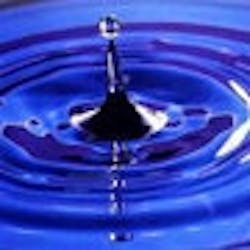EPA/Corps Try to Clear Muddied Waters
Joint guidance to assist government personnel in exercising jurisdiction under the Clean Water Act (CWA) in the wake of a Supreme Court decision that muddied the waters on this issue was issued on Dec. 2, 2008, by the U.S. Environmental Protection Agency (EPA) and the U.S. Army Corps of Engineers. The guidance is titled “Clean Water Act Jurisdiction Following the U.S. Supreme Court’s Decision in Rapanos v. United States & Carabell v. United States (Rapanos),” and is a useful document that chemicals professionals with interests in CWA permitting should review.
Defining Water Boundaries
The CWA prohibits the discharge of any pollutants, including dredged or fill materials, into “navigable waters” except in compliance with the CWA. In many cases, this means that a permit must be obtained from EPA pursuant to CWA Sections 402 or 404. The CWA defines “discharge of a pollutant” as “any addition of any pollutant to navigable waters from any point source.” “Navigable waters” means the waters of the United States, including the “territorial seas.”
In Rapanos four justices, in a plurality opinion authored by Justice Antonin Scalia, concluded that the agencies’ regulatory authority should extend only to “relatively permanent, standing or continuously flowing bodies of water” connected to traditional navigable waters, and to “wetlands with a continuous surface connection to” such relatively permanent waters. Justice Anthony Kennedy didn’t join the plurality’s opinion. Justice Kennedy agreed with the plurality that the statutory term “waters of the United States” extends beyond water bodies that are traditionally considered navigable, but found the plurality’s interpretation of the scope of the CWA to be inconsistent with the CWA.
Justice Kennedy concluded instead that wetlands are waters of the United States “if the wetlands, either alone or in combination with similarly situated lands in the region, significantly affect the chemical, physical, and biological integrity of other covered waters more readily understood as ‘navigable.’ When, in contrast, wetlands’ effects on water quality are speculative or insubstantial, they fall outside the zone fairly encompassed by the statutory term ‘navigable waters’” (126 S. Ct. 2208, 2248 (2006). Chief Justice John Roberts wrote a separate concurring opinion explaining his agreement with the plurality. See 126 S. Ct. at 2235-36). Four justices, in a dissenting opinion authored by Justice John Stevens, concluded that EPA’s and the Corps’ interpretation of “waters of the United States” was a reasonable interpretation of the CWA.
Clearing Up Jurisdictional Confusion
The new guidance updates a document released in June 2007 that sought to interpret the Supreme Court’s decision in Rapanos, as the decision inspired considerable confusion over the scope of CWA jurisdiction. The jurisdictional question is important to many in the environmental area because CWA coverage involves numerous regulatory requirements, including permits issued under CWA Sections 402 and 404.
Importantly, the new guidance addresses examples of what are “traditional navigable waters.” The guidance states, for example, that the “agencies generally will not assert jurisdiction over the following features: [s]wales or erosional features (e.g. gullies, small washes characterized by low volume, infrequent, or short duration flow) [and] [d]itches….”
The guidance also provides more detail for determining whether a wetland is adjacent to traditional navigable waters. EPA and the Corps state that a wetland is adjacent if it has “an unbroken hydrologic connection” to jurisdictional waters or is separated from those waters by a berm or similar feature or is reasonably close to jurisdictional water.
Finally, the guidance explains when the agencies will apply Justice Kennedy’s so-called “significant nexus standard,” as opposed to Justice Scalia’s “continuous surface connection” test to determine CWA jurisdiction.
The U.S. Supreme Court’s decision in Rapanos, the new guidance, and related information are available at www.epa.gov/owow/wetlands/guidance/CWAwaters.html.
Lynn Bergeson, Regulatory Columnist for Chemical Processing, is managing director of Bergeson & Campbell, P.C., a Washington, D.C.-based law firm that concentrates on chemical industry issues. The views expressed herein are solely those of the author. This column is not intended to provide, nor should be construed as, legal advice.
